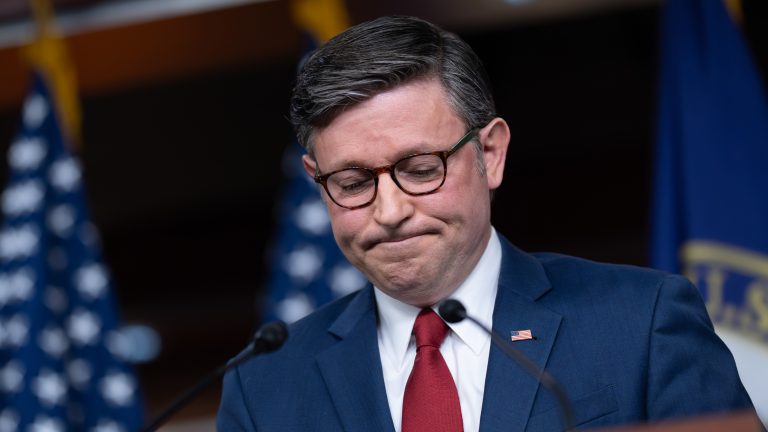WASHINGTON — As the federal government emerges from its longest shutdown in decades, questions about the mechanics of the nation’s healthcare system are taking center stage. Lawmakers, policy analysts, and industry stakeholders are examining how public funds flow through the healthcare marketplace, sparking a renewed debate over the role of subsidies, insurance profits, and long-term sustainability.
The 42-day lapse in government funding put programs on pause, disrupted federal operations, and highlighted how interconnected policy decisions and economic outcomes can be. Among the areas receiving the most attention is the Affordable Care Act (ACA) and the pandemic-era subsidies designed to support Americans in securing health coverage.
While the shutdown itself has ended, the underlying tensions in healthcare funding remain unresolved. Key questions persist: Who benefits from government spending? Are subsidies effectively lowering costs for Americans, or are they primarily fueling profits for the insurance industry?
Rising Profits Amid Expanding Subsidies
Data from federal reports and industry filings suggest the health insurance sector has seen substantial gains in recent years. Net earnings for the nation’s four largest insurers — UnitedHealth Group, Elevance, Centene, and Cigna — have grown roughly 216% since the ACA’s implementation in 2010. Meanwhile, stock prices have dramatically outpaced broader market indices, according to research from the Paragon Health Institute.
The institute’s analysis shows that the weighted average of health insurance stock prices has increased 1,032% since 2010 and 448% since 2013, compared to the S&P 500’s gains of 251% and 139% during the same periods. These figures underscore the growing financial stakes for insurers in a system heavily intertwined with taxpayer subsidies.
The subsidies themselves are substantial. Federal estimates indicate that in 2023 alone, insurance companies received $1.8 trillion in support through ACA programs. These payments are designed to make coverage more affordable for Americans but also represent a critical revenue stream for the companies administering the plans.
The Debate Over “Phantom Policies”
An emerging point of contention revolves around policies that appear to generate minimal healthcare activity. Data from the Paragon Health Institute suggest that roughly 12 million ACA enrollees — about 35% of participants — have not filed any claims. Analysts describe these as “phantom policies,” funded through taxpayer dollars but not utilized for medical care, creating profits for insurers without tangible public health benefits.
Rep. Dusty Johnson, R-S.D., highlighted this phenomenon in a recent podcast appearance. “These layered subsidies don’t go to Americans; they go directly to insurance companies,” Johnson explained. “40% of these policies have never had a single claim applied to them. People aren’t using them, and they aren’t making Americans healthier. Instead, they are checks written to the insurance companies.”
Critics argue that such arrangements create “perverse incentives,” in which insurers maximize revenue from federal support rather than seeking efficiencies or reducing premiums. Some Republicans have called this a form of corporate welfare, contending that it discourages companies from pursuing meaningful cost reductions.
Political Alignment and Contributions
The controversy also highlights a close financial relationship between major insurers and Democratic politicians. Campaign contribution data from OpenSecrets indicates that donors linked to UnitedHealth Group, Centene, and Cigna disproportionately favored Democratic candidates in recent election cycles. For example, UnitedHealth-affiliated individuals contributed over $740,000 to Vice President Kamala Harris’s campaign in 2024, compared with roughly $158,000 to former President Donald Trump’s campaign.
These figures, combined with public statements from industry executives, reinforce concerns about policy alignment and influence. UnitedHealth Group CEO Tim Noel warned investors in October that if sustainable premium rates could not be achieved, the company might exit certain markets, potentially affecting millions of ACA enrollees. “Where we are unable to reach agreement on sustainable rates, we are enacting targeted service area reductions,” he said. “This could reduce our ACA enrollment by approximately two-thirds.”
Elevance and Centene have similarly adjusted forecasts in response to rising costs associated with ACA programs, including pandemic-era expansions, while Cigna has also acknowledged financial pressures. These moves illustrate the complex balance between government support and insurer sustainability.
Subsidy Policy Under Scrutiny
The current debate is compounded by pandemic-era expansions to ACA subsidies, initially introduced under the Biden administration. Supporters argue these measures have helped Americans maintain coverage during difficult economic conditions. Critics counter that the expanded subsidies are expensive, encourage overreliance on government payments, and do little to lower underlying healthcare costs.
Rep. Mariannette Miller-Meeks, R-Iowa, called the arrangement “corporate welfare” during a recent interview. “It may make coverage more affordable for one person, but it doesn’t incentivize insurers to lower costs,” she said. “Premiums continue to rise because insurance companies are directly subsidized by taxpayers.”
With subsidy expiration looming at the end of 2025, Congress faces a critical decision: extend the programs, reform the structure, or allow them to lapse. The outcome will affect both the insurance market and millions of Americans who rely on subsidized coverage.
Presidential Criticism and Partisan Responses
Former President Donald Trump has been vocal in his criticism of ACA subsidies. On social media, he characterized the system as a “scam” benefiting insurers at the expense of taxpayers, while proposing that Republicans redirect support to individual health savings accounts.
Democrats have defended the subsidies as vital to maintaining affordable access to healthcare, especially for those with low to moderate incomes. They argue that reductions in support would raise premiums and leave millions without coverage, potentially exacerbating public health disparities.
The political stakes are high. Both parties face scrutiny for how taxpayer dollars are spent and for the broader implications of ACA policy decisions. As the government funding debate continues, healthcare subsidies are likely to remain a contentious topic well into the next legislative session.
Economic and Public Implications
Analysts warn that the ongoing dispute has broader economic implications. If subsidies are reduced or eliminated, some insurers could exit markets or restructure coverage options, impacting access and affordability. Conversely, continuing subsidies without reform may further inflate government spending and insurer profits.
For many Americans, the debate is not merely political — it is personal. Rising premiums, uncertainty about coverage, and questions about the long-term viability of ACA programs create anxiety for individuals and families navigating an increasingly complex healthcare landscape.
As lawmakers deliberate, stakeholders from industry, advocacy groups, and public policy organizations continue to weigh in. The government shutdown may have ended, but the spotlight on healthcare economics is only intensifying, promising additional debate and scrutiny in the months ahead.

Emily Johnson is a critically acclaimed essayist and novelist known for her thought-provoking works centered on feminism, women’s rights, and modern relationships. Born and raised in Portland, Oregon, Emily grew up with a deep love of books, often spending her afternoons at her local library. She went on to study literature and gender studies at UCLA, where she became deeply involved in activism and began publishing essays in campus journals. Her debut essay collection, Voices Unbound, struck a chord with readers nationwide for its fearless exploration of gender dynamics, identity, and the challenges faced by women in contemporary society. Emily later transitioned into fiction, writing novels that balance compelling storytelling with social commentary. Her protagonists are often strong, multidimensional women navigating love, ambition, and the struggles of everyday life, making her a favorite among readers who crave authentic, relatable narratives. Critics praise her ability to merge personal intimacy with universal themes. Off the page, Emily is an advocate for women in publishing, leading workshops that encourage young female writers to embrace their voices. She lives in Seattle with her partner and two rescue cats, where she continues to write, teach, and inspire a new generation of storytellers.








